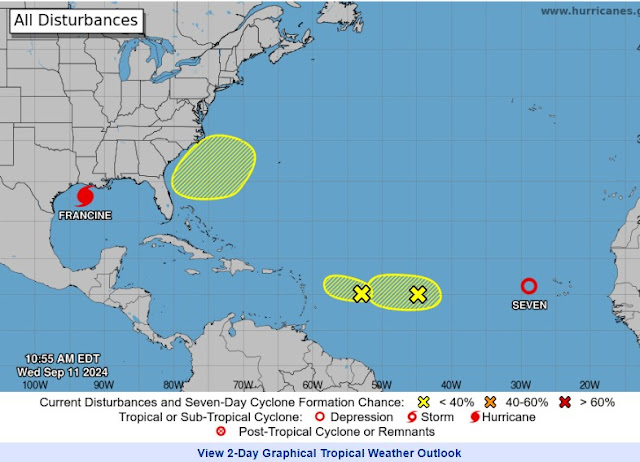Written by the TreasureGuide for the exclusive use of the Treasure Beaches Report.
 |
| 9-11-2021. |
Twenty-three years ago! Can you believe it? Unless you are very young, you probably remember that morning. I do. But the most shocking image to me was the building crumbling into dust - the destination of all people and things. A huge intelligence failure. A huge failure, but not the last.
---
 |
| 1930 Dime Florida Beach Find. |
I'm thinking maybe it would grade as fine. What do you think?
The Sheldon scale is commonly used to assist with grading coins. Here is a link.
Grading Guide — Canadian Coins (canadian-coins.ca)
I learned of one very valuable Canadian dime. It is the 1936 "dot" dime. Details below.
I haven't found any valuable errors or varieties for the 1930 dime yet.
---
 |
| 1967 Canadian Quarter Found on a Treasure Coast Beach. |
I've found two 1967 Lynx commemorative quarters like the one shown above. These were made in both 80% and 50% silver, and it is next to impossible to tell the difference from visual inspection or readily available home tests. Specific gravity or XRF analysis is necessary.
Naturally the quarter is heavier than the dime and can be worth more like $6.50 (Canadian) in silver, depending, of course, upon the changing value of silver and which you have.
Besides the 80 and 50 percent Lynx quarters, there are also a few (very few) made of nickel, which are very valuable. The problem is to identify which you have.
This is a particularly difficult coin to value. Many shops will not buy these because of the difficulty of determining the composition. That, of course, can be solved with XRF testing.
I found no convenient list of errors or varieties for Canadian coins yet. I'd assume there must be books.
Below is a link to a list of Canadian penny errors to look for.
Canadian Penny Error List | CoinHub (coinhubmedia.com)
I'll take a look at a few Canadian one-cent and five-cent coins in the future. I've found a lot of those.
I'll continue to look for better resources for Canadian coins too.
As Florida beach metal detector finds, Canadian coins are too numerous to neglect.
--
 |
| Source: nhc.noaa.gov |
The Atlantic Basin is more active, as would be expected. Francine is near Louisiana.
Not much immediate to concern us.
 |
| Source: SurfGuru.com. |
No big surf predicted, but a little bigger surf next week.
---
If you like war, crime and inflation, you know who to vote for. Actions speak louder than words.
---
Good hunting,
TreasureGuide@comcast.net
